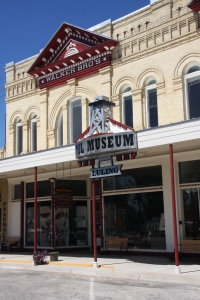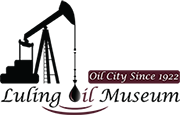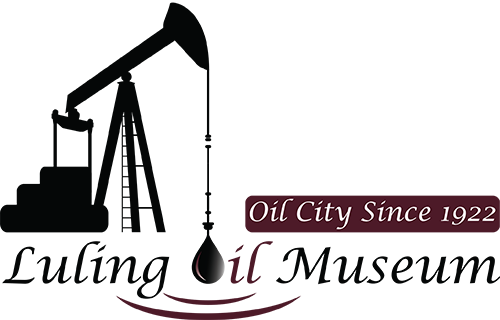Once known as “the toughest town in Texas”, Luling was established in 1874 as the far western stop of the Sunset Branch of the Southern Pacific Railroad. In 1922, Edgar B. Davis brought in Rafael Rios #1, which proved to be part of one of the most significant oil fields ever discovered in the Southwest. Perhaps his greatest legacy was the discovery of the Edwards Lime. It set off vigorous exploration to find the lucrative shallow production. Almost overnight, Luling was transformed from a railroad town of 500 to an oil town of 5,000. Tents filled every vacant area with roughnecks and their families. “Rag Town” as they called it came with every kind of good and bad-makeshift saloons, restaurants and even a shooting gallery as entertainment. Work was hard and living even harder, but the dream that unfolded was a microcosm of Texas history. It was a time when a community of farmers and their families responded to the coming of the railroad, only to have their lives changed forever by the discovery of oil.
The Luling Oil Museum houses tools used in the oil industry and examples of oil production technology from the past. Various artifacts and documents trace the development of the oil industry in Luling and the Central Texas area. Whether your interest is in learning more about an oil town, the oil industry, and the people instrumental in the growth of the oil industry, or the rich cultural heritage of Central Texas, the Luling Oil Museum has something to offer you.
Ever evolving and changing, we gratefully accept and appreciate any donations of historic memorabilia. If you wish to contribute volunteer hours, please send us an email or contact us by phone. Monetary donations are always accepted and greatly appreciated.


